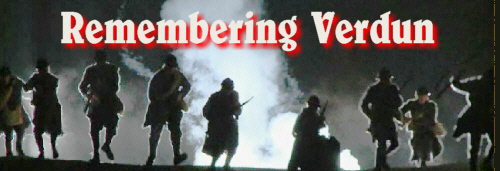
James R. McConnell, Sergeant-Pilot, Lafayette Escadrille
Selections from Flying for France
[In May 1916] The escadrille was ordered to the sector of Verdun. While in a way we were sorry to leave Luxeuil [in the Alsace], we naturally didn't regret the chance to take part in the aerial activity of the world's greatest battle. The night before our departure some German aircraft destroyed four of our tractors and killed six men with bombs, but even that caused little excitement compared with going to Verdun. We would get square with the Boches over Verdun; we thought it is impossible to chase airplanes at night, so the raiders made a safe getaway.
 |
| Nieuport 17 of the Type Flown by the Lafayette Escadrille |
The fast-flowing stream of troops, and the distressing number of ambulances brought realization of the near presence of a gigantic battle. Within a twenty-mile radius of the Verdun front aviation camps abound. Our escadrille was listed on the schedule with the other fighting units, each of which has its specified flying hours, rotating so there is always an escadrille de chasse over the lines. . .
The country below has changed into a flat surface of varicolored figures. Woods are irregular blocks of dark green, like daubs of ink spilled on a table; fields are geometrical designs of different shades of green and brown, forming in composite an ultra-cubist painting; roads are thin white lines, each with its distinctive windings and crossings - from which you determine your location. The higher you are the easier it is to read.
 |
| Replica of the Battlefield at the Verdun Memorial |
Immediately east and north of Verdun there lies a broad, brown band. From the Woevre plain it runs westward to the "S" bend in the Meuse, and on the left bank of that famous stream continues on into the Argonne Forest. Peaceful fields and farms and villages adorned that landscape a few months ago - when there was no Battle of Verdun. Now there is only that sinister brown belt, a strip of murdered Nature. It seems to belong to another world. Every sign of humanity has been swept away. The woods and roads have vanished like chalk wiped from a blackboard; of the villages nothing remains but gray smears where stonewalls have tumbled together. The great forts of Douaumont and Vaux are outlined faintly, like the tracings of a finger in wet sand. One cannot distinguish any one shell crater, as one can on the pockmarked fields on either side. On the brown band the indentations are so closely interlocked that they blend into
a confused mass of troubled earth. Of the trenches only broken, half-obliterated links are visible.
Columns of muddy smoke spurt up continually as high explosives tear deeper into this ulcered area. During heavy bombardment and attacks I have seen shells falling like rain. The countless towers of smoke remind one of Gustave Doré's picture of the fiery tombs of the arch-heretics in Dante's "Hell." A smoky pall covers the sector under fire, rising so high that at a height of 1,000 feet one is enveloped in its mist-like fumes. Now and then monster projectiles, hurtling through the air close by, leave one's plane rocking violently in their wake. Airplanes have been cut in two by them.
 |
| James McConnell |
For us the battle passes in silence, the noise of one's motor deadening all other sounds. In the green patches behind the brown belt myriads of tiny flashes tell where the guns are hidden; and those flashes, and the smoke of bursting shells, are all we see of the fighting. It is a weird combination of stillness and havoc, the Verdun conflict viewed from the sky.
Author James McConnell, in March 1917, was the last American aviator killed by the enemy before America's entry into the Great War.

The University of Virginia, which is the repository of James McConnell's papers, has an excellent online exhibition about his wartime service. It also discusses the several monuments erected to his memory in France and the US, including the unusual "The Aviator" by Gutzon Borglum, sculptor of Mt. Rushmore:
ReplyDeletehttp://explore.lib.virginia.edu/exhibits/show/mcconnell